Bulgaria, officially Republic of Bulgaria, is a country in Southeast Europe. Located in the eastern Balkans, it borders Romania to the north, Serbia and North Macedonia to the west, Greece and Turkey to the south, and the Black Sea to the east. The sixteenth largest country in Europe with a territory of 42,855 sq. miles. Sofia is the capital and largest city. Other large cities are Plovdiv, Ruse, Varna and Burgas.
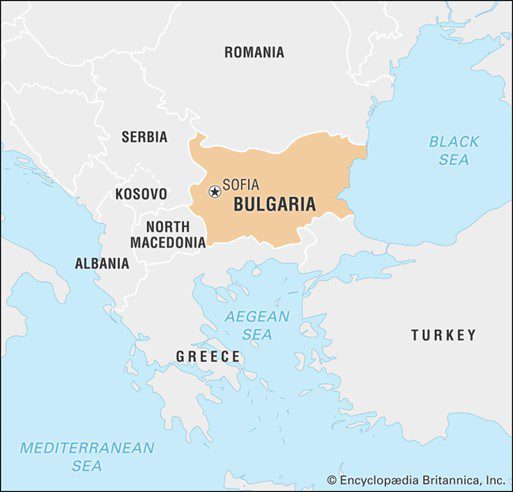
Bulgaria has a lot to offer - a natural bridge between East and West, it has a natural bouquet of culinary, cultural and natural treasures both from the East and the West.
BULGARIAN ART CRAFTS
Bulgaria has a rich tradition in arts and crafts. Each region is known for different and unique crafts, techniques and objects of craftsmanship. Exploring craft traditions, you can learn about the customs and beliefs of the local people, as well as the life of the Bulgarian people over the centuries.
In short, we introduce traditional forms of art, architecture, ceramics, carpentry, wood carving, etc. We will also learn about Bulgarian needlework. Bulgarian women have always used a sewing needle and patterned threads to express their feelings, beliefs and the beauty around them..
We will virtually visit Oreshaka - a popular celebration of traditional crafts and take a virtual trip to a park-museum Etara near Gabrovo, a large and lively ethnographic complex. In Veliko Tarnovo we will watch masters create Orthodox icons! Traveling through the Bulgarian cities, we will visit the most magnificent ones churches and old buildings. Additionally, during our virtual tour and introduction to traditional crafts there will be plenty of time and opportunities to consider unique souvenirs.
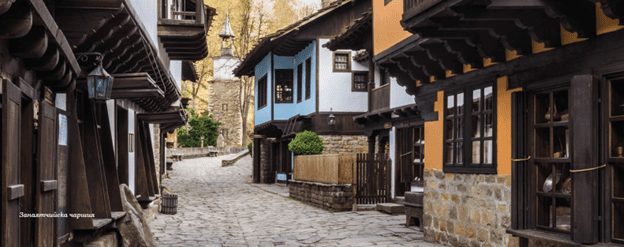
Visit BG Crafts Gallery and discover artworks by contemporary Bulgarian artists!
BULGARIAN CERAMICS
Bulgarians potters are well known for their skills. Their works are not only valuable souvenirs, but fully usable works of art. In the past Troyan, Gabrovo and Teteven were known centers of pottery.
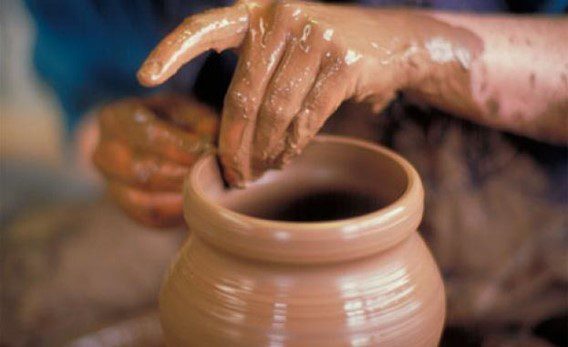
Engraving, or drawing straight lines on ceramic objects, has been a common activity since ancient times. At a later stage, this painting with the multi-colored patterns that decorate earthenware, pots and jugs produced by Bulgarian potters became a traditional art.
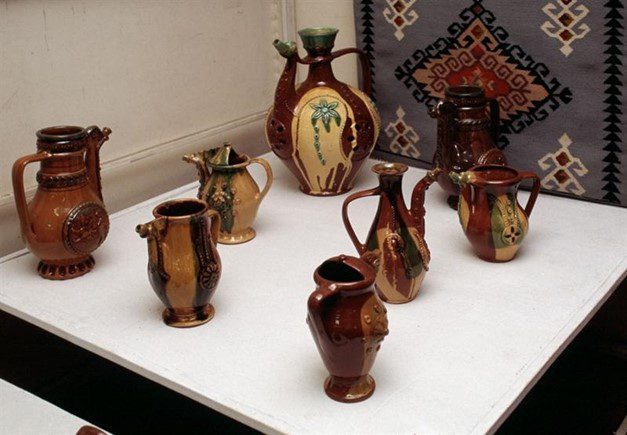
BULGARIAN ICON PAINTING
The icon painter is a craft and art with many followers. The beginning of the icon painting school is considered to be the adoption of Christianity in Bulgaria in IX and X centuries. Traveling through the centuries, it became a tradition that reached its peak during the Second Bulgarian Kingdom. Initially, asceticism was characteristic of Bulgarian icons. Over time, the Bulgarian icons began to become more and more realistic, the faces more and more alive, and landscapes appeared that formed the background. Heavy crowns and baroque thrones are introduced, and colors become more vivid and bright. Cities such as Tryavna, Bansko and Samokov are the main centers of icon painting.
WOODWORKING AND CARVING
Woodworking and carving have always gone hand in hand with the production of basic home furnishing items, the production of tableware and cooking utensils. To make them more interesting and attractive, the masters decorated them with wood-carved elements. Even the shepherd's gags were exquisitely decorated.

Trunks and chaises in Bulgarian homes, baby cradles, cots and cots were richly decorated with motifs inspired by the wonders of nature, featuring floral elements and were usually made by the man in the household. All the wooden spoons, stools and various musical instruments were richly covered with carved patterns that turned every wooden object in the household into a work of art. The Trevne school in the small town Herbaceous, in the foothills of Stara Planina, has always been and is the center of wood carving.
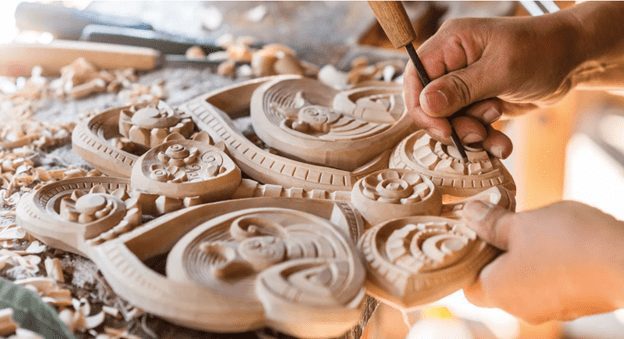
BULGARIAN EMBROIDERY
The Bulgarian needlewoman is characterized by extensive use of geometric shapes. They are arranged on the hems, necklines and sleeves of traditional garments, tablecloths and head cloths. They are arranged to form continuous lines of color that add waterfalls of color to white shirts, clothes and home decorations. Floral motifs are everywhere in Bulgarian needlework, since nature has always been a major source of inspiration.

JEWELLERY AND IRON FORGING
Crafts and arts in Bulgaria are also related to goldsmithing and forging. Coppersmithing produced cauldrons, jezvetas and various vessels, which were elaborately shaped and decorated. While everyday copper objects were decorated to add beauty to everyday life, goldsmithing and iron forging were devoted entirely to decorating and adding a sense of uniqueness and luxury. Goldsmiths rely on traditions from the time of the ancient Thracians, having developed them over the centuries and added new plant elements and geometric shapes.

WEAVING AND CARPET MAKING
Bulgarian women have been for centuries skilled weavers. They are created specific patterns, motifs and color combinations that encoded the magic of beliefs. The production of carpets has a long history - it dates back from the 9th century. In the great centers of carpet-making, such as Kotel and Chiprovtsi, the craft continues to evolve.

KNITTING
Knitting and overall wool processing (from the extraction of the raw wool to the final product) have always been traditional occupations for Bulgarians, which is a consequence of the predominantly rural population and rural life in the country before the Second World War. Even today, every household has knitting needles and hooks.
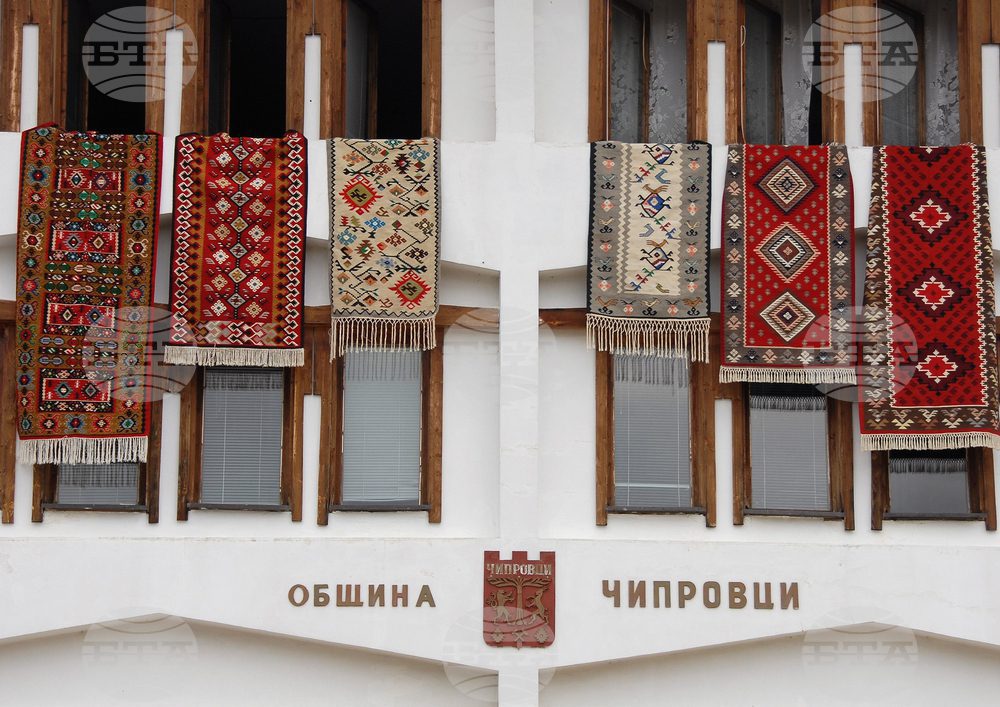
Back in the day, girls learned to knit from a very young age. The greater the masters of knitting and needlework, the greater their chances of domestication and finding a "good" man.
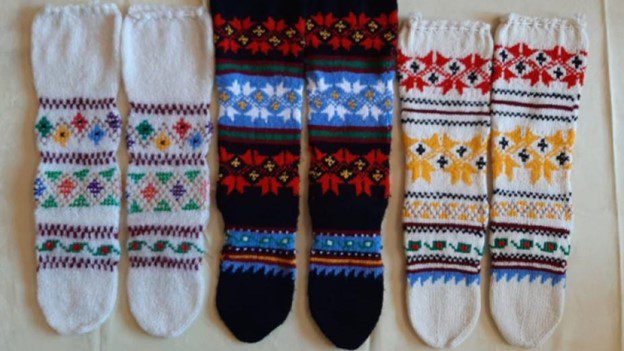

Knitting is was and still is a good meeting occasion and topic of conversation for older women. When the women get together to talk and gossip, they usually knit socks or something for their grandchildren and families.
Follow us for more information: BG Crafts Gallery
